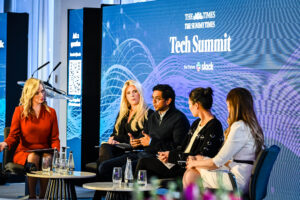How could I make you love me?
- Perhaps my quirky humour will charm you?
- Or maybe you’ll respond to my super-brainy intelligence?
- Maybe if you knew how sensitive and in touch with my feelings I am, you’d melt towards me?
- Or possibly if I treat you with a whiff of contempt to show how cool I am, you’ll become a fan?
Truth is, if I really tried hard, I might just about pull off those facades for a moment. But not for long. And not all at once. And none would be authentic.
Singular identities
It’s the same for brands. There are great examples of advertising communications that use each of the tactics above to woo targeted tribes of consumers.
Take, for example, brands like these:
- Oatly
- Innocent
- Cadbury’s Crème Egg
- Pret A Manger
All use a quirky, fun, irreverent humour and a cheeky, wry tone of voice to connect with consumers who appreciate an intelligent, not-too-serious view of life.
In honor of #ArborDay, Subaru employees planted trees in our local community 🌲🌲🌲. Show us what you’re doing with your Subaru to celebrate! #SubaruLovesTheEarth pic.twitter.com/rtDZ9QD73g
— Subaru (@subaru_usa) April 29, 2022
Meanwhile, brands like Patagonia, The Body Shop and Subaru go to great lengths to not only talk their green and sustainable credentials but offer visible proof of those values in their businesses.
It undoubtedly attracts people who share those values and admire those brands. They become more than just products but signifiers of a mindset and lifestyle.
There’s a reason Subaru has the highest loyalty rate of any car brand in the US - it’s not just because of its vehicles.
Some brands, on the other hand, live and die by their cool factor. Apple, Peleton, TESLA, lululemon, and countless fashion brands (from FCUK back in the day to Ye x GAP right now) owe a goodly portion of their annual sales to the fact that they live at the leading edge of cool. Cool people know cool brands. And the brands speak the cool speak.

Acknowledge multiple contexts
Which is all well and good. Credit to the above-mentioned brands.
But, whilst those brands project their singular identity across the board, we humans are rarely just one thing. Often, we’re not even one person.
Usually, we’re multiple different flavours of one person, like multiple mixes of a favourite tune - a slightly different variation at work than at home, with parents than with lovers or friends or with the vicar, say.
Even if I have a weakness towards cool gadgets and the latest tech, it doesn’t necessarily apply in every category. I may desperately want the latest iPhone or ON trainers, but I couldn’t care less about my oven being cutting-edge. Or my lawnmower. In other words, it’s horses for courses.
They are perfect slippers for around the house. My Christian Louboutin’s however are for trips to Asda.
— Helena 🌵☀️ (@Girlw0ndr) March 8, 2022
I remember conducting a focus group a few years ago where the young women gave me a PhD-level lesson in the concept of selective affluence - that is, it was perfectly congruent to spend £500 on a pair of Christian Louboutin shoes at the same time as shopping exclusively from ASDA’s own-label grocery range. The high/low mix was cool. A shopper can be both kinds of consumers, simultaneously.
Open to alternatives
So, for brands who are searching for their breakthrough, authentic personality, remember that it is okay to develop facets to your personality.
Yes, you need to balance consistency with context - but one trick rarely fits all people or conditions.
That dry, sardonic tone might jar in the midst of a serious product recall crisis, or a pandemic.
You need to build in room to breathe, as well as live your truth.
Taking on new guises
When KFC famously ran out of chicken, it took out a full-page ad in The Sun and Metro newspapers depicting an empty bucket of chicken with crumbs spilling out. Instead of a typical KFC logo on the side, the letters were switched around to read "FCK".
This is a brilliant example of a brand appealing to its understandably unhappy customer base’s sense of humour, whilst staying true to its fun and playful brand tone.
Perfect apology newspaper ad from @KFC_UKI #FCK #KFC pic.twitter.com/cSQAnLjEOs
— Benj (@BenjaBitch) February 23, 2018
ITV’s Love Island recently announced it would no longer be sponsored by fast-fashion brands. Instead, it agreed sponsorship from eBay in a deal seen as promoting the buying of pre-loved clothing instead.
Lost in universality
Resist chasing the fashionable thing. First, you will quite quickly attract copycats, because nothing breeds imitation like success. Second, it’s a dead cert to be out of fashion by the time you and all the other looky-likeys make it to market.
Another danger is laddering-up towards a bland, universal identity in order to appeal to the largest possible audience. That tends to result in platitudes that feel like motherhood and apple pie.
Happiness from the brand who brought you Santa Claus? Hard to find anything not to like but even Coke is now seeking something deeper.
Ageing toward authenticity
Brands that are expert at embracing different sides tend to have been around the block a few years.
Like people, they learn as they grow into their skin. A bit of scar tissue along the way helps build shared memories and relationships with customers. A strong brand has depth and can travel over time, markets and differing circumstances.
The real challenge is for new brands, with no mileage under their belt. What is “authentic” if you’re a SPAC-funded start-up with just six months' history and a brand wheel still warm from the printer?
You’ve no lived experience to show that, yes, you are cool and quirky but, when the chips are down, you’re a stand-up, reliable brand that will stand by its products and customers.
It’s not an easy task. That’s why fledgling brands should seek help crafting communications that feel credible.
Whether you’re an old hand or a new kid on the block, your brand values and purpose are key to establishing – or burnishing – your authenticity.
Tones and personality traits may evolve gradually over time, but values and purpose tend to remain the foundations of a strong brand.
What's better than a holiday in Las Vegas?
Answer: a holiday in Las Vegas with your best pals 🐶@VirginHotels @VirginHotelsLV pic.twitter.com/AJEGBSfkBt
— Virgin (@Virgin) May 8, 2022
Virgin started out a disruptive, badly-behaved provocateur. Nowadays, it’s a huge corporation, literally responsible for thousands of peoples’ safety and lives every day. But there’s still a hint of free-spirited individualism in its stance and tone. It manages the balance very carefully, remaining credible and engaging.
Flex your personality
Don’t be afraid to flex your brand personality within reasonable limits. After all, you’re marketing to humans and we are multilayered personalities ourselves.
Rarely does one size fit all - and certainly not all the time.
A brand manager needs to balance consistency with context so that the brand looks and feels true and credible in order to make those connections with consumers.
And what are brands really but concepts made by humans for humans?






